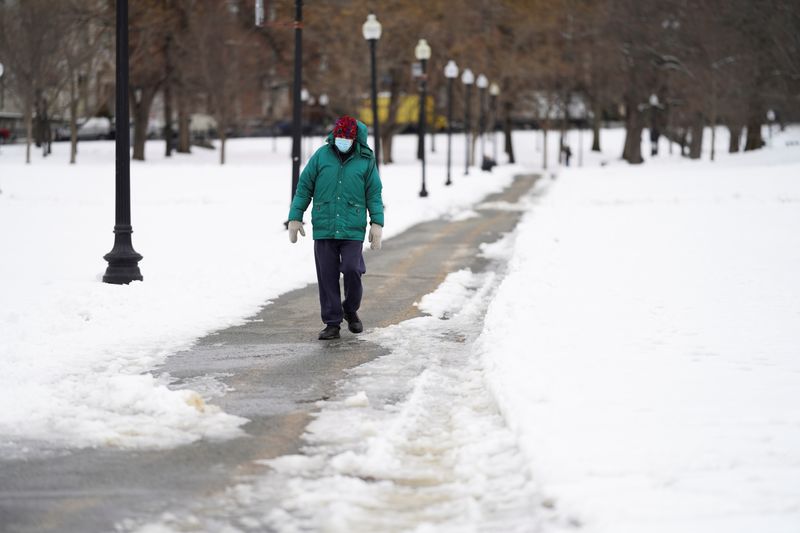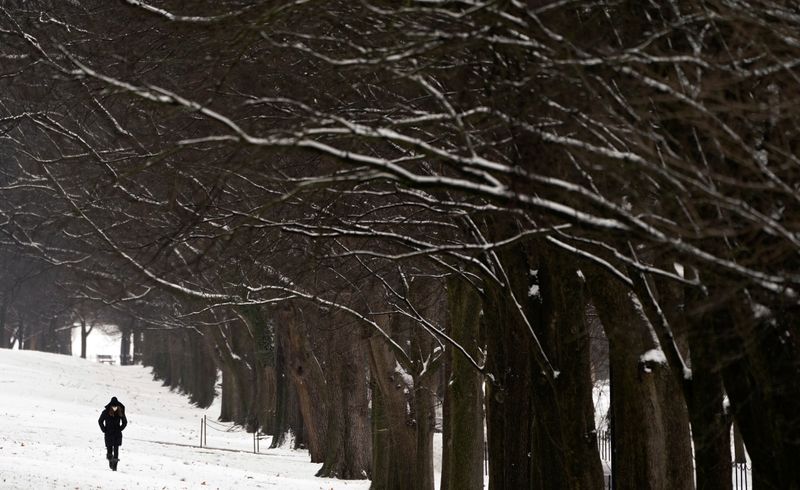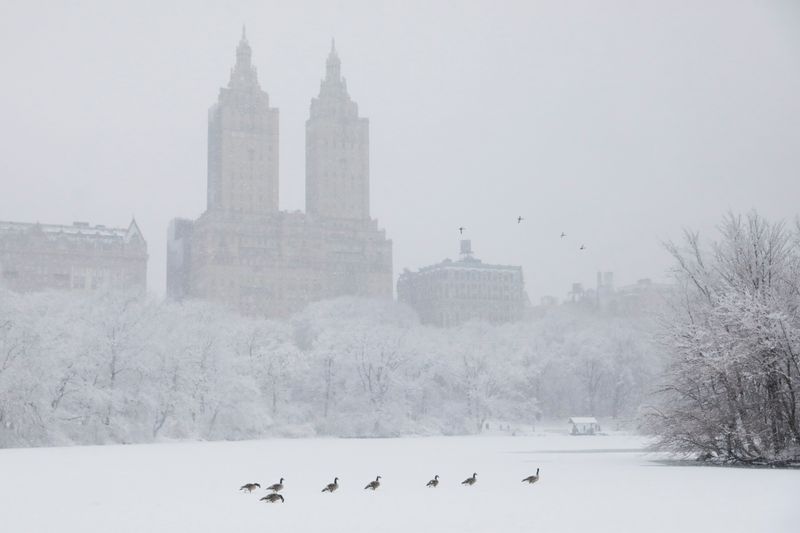(Reuters) – Icy blasts pummeled parts of the U.S. Midwest on Wednesday, the first of five storms threatening a blitz of snow and sleet from Washington state to Washington, D.C., and as far south as Louisiana and Mississippi.
Frigid temperatures as low as minus 36 degrees Fahrenheit (minus 38 degrees Celsius) in Cut Bank, Montana, on Wednesday were blamed on a polar vortex threatening to move south as it hovers at the Canadian border, said meteorologist Dan Petersen at the National Weather Service’s Weather Prediction Center in College Park, Maryland.
“It’s like a rapid-fire series of multiple storms coming,” Petersen said.
The polar vortex is a vast frigid air mass high up in the atmosphere, bringing with it frigid temperatures that can be prolonged if a storm develops.
“The cold air will be there waiting for the storm. When a storm goes by, the situation around the storm will continue to reinforce the cold air that’s in place,” Petersen said.
The first of those storms on Wednesday bombarded Kentucky, southern Illinois, northwestern Tennessee and eastern and central Arkansas.
“A lot of areas have light freezing drizzle, and it’s going to get heavier later today,” Petersen said. “That has the ability to break down power lines and, of course, it’s very difficult to travel on icy roads.”
Next up is a storm expected on Thursday to drop 3 to 5 inches (7.6 cm to 12.7 cm) of snow on West Virginia into Virginia and the nation’s capitol in Washington, D.C. Winter storm warnings were issued for the same time for metropolitan Portland, Oregon, and Seattle, Washington.
On Saturday, a brewing storm threatens to head for New York and New England, fueled by snow likely to turn to sleet and freezing rain in the mid-Atlantic states.
On Sunday yet another large system of “significant” snow and freezing rain is likely to slam the southern Plains and Mississippi Valley before heading north into the Ohio Valley and Great Lakes, he said.
“Possible freezing rain in northern Louisiana, Mississippi and Tennessee. There aren’t too many ice storms down there so this will definitely stand out,” Petersen said.
(Reporting by Dan Whitcomb; additional reporting by Barbara Goldberg; Editing by Lincoln Feast and Jonathan Oatis)


























